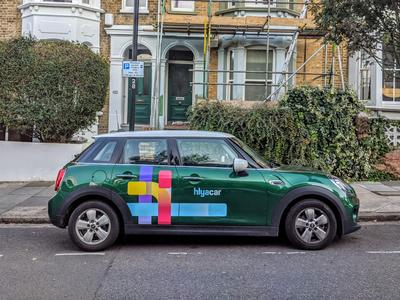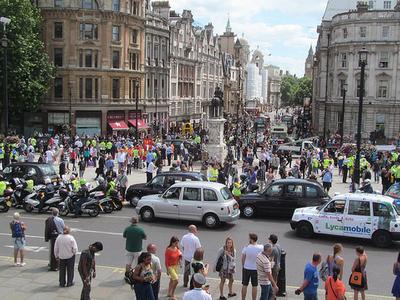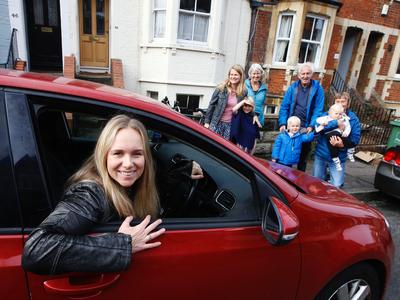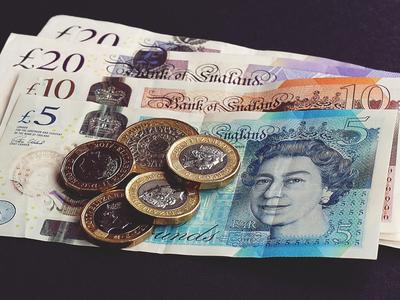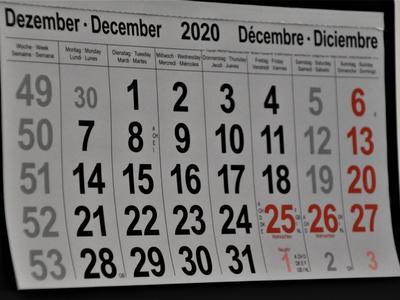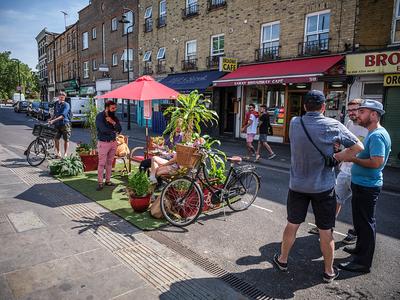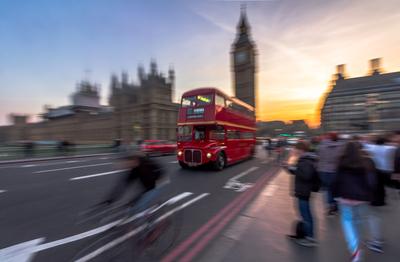
Travel after lockdown: How is London moving?
In March, the UK government advised everyone to avoid any and all non-essential travel. As a result, movement around major cities was reduced drastically. In London in particular, where previously packed public transport systems were met with a dwindling number of passengers, it was clear that the way people chose to travel (if they chose to travel at all) was significantly impacted as people either stayed home or sought alternative methods of transport that could better accommodate social distancing during this time.
In other words, the Coronavirus pandemic caused a massive shift in the ways in which people travelled during the first half of 2020. However, now measures have started to ease, we have seen travel around the city start to pick up. With Boris Johnson now urging people to return to the office from August, transport is slowly becoming an integral part of our daily lives once again. The question is, however, to what extent things are returning to normal.
Amid the unprecedented circumstances of this pandemic, it’s fair to assume that the ways in which people are moving around London has changed - but just how much?
How has travel in London changed?
In order to find out just how Londoners are moving through the city in 2020, we here at Hiyacar have looked into some data from various map and transport apps in order to reveal how Londoners have been travelling during this pandemic, and how they will continue to travel post-lockdown.
To do so, we have analysed data from the following datasets:
-
Hiyacar’s platform sign-ups
-
Apple Map’s requests for directions by driving, transit and walking
-
Google Maps mobility trends for transport hubs such as the underground, bus and train stations
-
Citymapper’s app usage and tracked journeys
Here’s what we found.
Hiyacar saw a significant increase in car sharing
Lockdown measures and reduced service made public transport out of the question for most people - this was particularly clear during the height of the pandemic. Fortunately, Londoners found an alternative solution with peer-to-peer car sharing. According to data pulled from our platform, sign-ups have already increased by 100% this year so far.
What this ultimately indicates is not only an increase in the usage of peer-to-peer car sharing services, but it also shows a high demand for driving as a mode of transport.
This comes down to one main factor - namely, lockdown restrictions and social distancing measures making public transport out of bounds for a lot of people. For key workers in particular, car sharing proved to be a great alternative to public transport during this period. This was helped along by various initiatives such as our very own ‘free for NHS workers’ initiative, which was introduced to support and ease the minds of NHS and emergency services staff who were hesitant or otherwise unable to use public transport during lockdown.
Apple Maps’ mobility trends indicated a decrease in public transport usage, but continued demand for driving
Apple Maps’ mobility index - that is, the report that includes all the requests for directions using the platform whether from driving, public transport or walking - showed a large decrease in public transport usage. Requests for public transport directions dropped by 99% from the usual baseline amount in April. This may come as no surprise, given that this was when lockdown restrictions were at their most severe.
Similar to the trend we saw when looking into our own data, it appears driving saw continued higher demand throughout this period. As people were advised against the use of public transport, travelling by car presented itself as the best alternative for many - and demand may not be falling anytime soon. Despite loosening restrictions, direction requests for cars is still only 12% below the usual amount for this time of year. Comparatively, requests for walking and public transport are both still around 45% beneath the baseline. From this, it is safe to assume that driving will remain in relatively high demand for a while to come.
Google Maps’ mobility also reflected a decrease in public transport
A decrease in public transport usage coinciding with the high demand for car sharing was an enduring trend we uncovered during this research. According to the Google Maps’ mobility report which reflected trends in the number of requests for directions to public transport hubs (mainly underground stations, bus stops and train stations), the usage of these modes of transport saw a significant decrease. During the peak of lockdown in April, public transport usage was -85% below the usual.
However, as measures have eased, this gap has started to close up gradually. Figures for July indicated improvement with a slightly smaller drop of 57% below the average baseline. Though this does show an uptick in usage, it also means Londoners are still not utilising public transport at a level they once were - presumably because they are still adhering to the government’s lockdown advice by avoiding public transport wherever possible. This ultimately suggests that public transport usage has a while to go before it returns to pre-lockdown levels.
CityMapper usage showed an overall decrease in movement
Looking at data from the mapping service app CityMapper, we can see how overall movement has been impacted during the Coronavirus lockdown, and if and how it has started to pick up alongside easing restrictions. CityMapper’s mobility index illustrates what proportion of the city is moving compared to the usual by looking at the app’s estimated usage and the number of journeys tracked. From this, we can see a distinct decrease in movement in and around London.
In April alone, usage dropped to just 6% of the average, a 96% drop from January’s reported usage of 102%. Going into July and August, usage appears to have picked up slightly, with the proportion of people moving now at around 40% of average. However, this still represents a definite lack of mobility around London. More so, it represents a significant decrease in public transport usage as, even though CityMapper’s report doesn’t specifically name the type of transport being tracked, the app is almost overwhelmingly used by those who are travelling by public transport.
The Future of Travel in London?
The Coronavirus pandemic has caused previously unimaginable changes in the way we live our lives - including the ways in which we travel. The question is, however, how permanent were these shifts?
As we continue to ease out of lockdown and back into our normal routines, it’s clear that anxiety surrounding public transport is still rife. As we saw when looking at the data across our platform alongside various mapping services, this anxiety means public transport usage has only increased slightly, whilst driving and car-sharing have remained in relatively high demand.
From these results it’s not a leap to assume that car sharing is on track to become a popular choice as we move further out of lockdown - and the knock-on effects of this could be beneficial for all Londoners. An uptick in peer-to-peer car sharing means a natural decrease in car ownership, the result of which is fewer parked cars that sit idle for 96% of their lifetime. It also means fewer cars on the roads and a decrease in congestion, both of which can help London become a greener city in the long-term.

